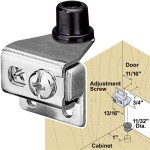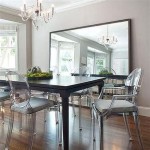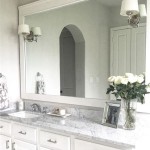Decorative Mirror Design Ideas: Enhancing Interiors with Reflection and Style
Decorative mirrors serve as versatile and impactful elements in interior design, transcending their functional purpose to become focal points that amplify light, create visual interest, and add depth to any space. The vast array of available designs, shapes, and materials offers homeowners and designers countless opportunities to personalize their interiors and achieve desired aesthetic effects. From minimalist statements to ornate embellishments, decorative mirrors can be strategically incorporated into various rooms, augmenting existing décor and transforming the overall ambiance.
The selection of an appropriate decorative mirror necessitates a careful consideration of the room's size, style, and existing architectural features. A small mirror in a large room might be visually insignificant, while an oversized mirror in a cramped space could feel overwhelming. Similarly, a modern, geometric mirror might clash with a traditional, ornate setting. Therefore, a thorough understanding of design principles and a keen eye for detail are crucial for successfully integrating decorative mirrors into interior spaces.
Enhancing Space and Light: Strategic Placement and Mirror Size
One of the primary benefits of incorporating decorative mirrors into interior design is their ability to enhance the perception of space and amplify natural light. Mirrors reflect both artificial and natural light, effectively brightening dimly lit areas and making rooms feel more open and airy. This is particularly advantageous in small apartments, hallways, or rooms with limited window access. The strategic placement of a mirror can significantly improve the overall brightness and spaciousness of a room.
To maximize the impact of light reflection, consider placing a large mirror opposite a window or a light source. The mirror will capture and redistribute the light, illuminating the room more uniformly. This technique is especially effective in living rooms, dining rooms, and bedrooms. In hallways, long, narrow mirrors can create the illusion of greater length, making the space feel less constricted. In bathrooms, mirrors above the vanity are a standard element, but incorporating additional mirrors on adjacent walls can further enhance the room's brightness and openness. The size of the mirror should be proportionate to the wall on which it is placed, avoiding an imbalanced or visually awkward appearance.
Furthermore, the angle at which a mirror is positioned can influence its effectiveness in reflecting light. Slightly tilting a mirror upwards can direct light towards the ceiling, further contributing to the overall brightness of the room. Experimentation with different angles and placements can help determine the optimal configuration for maximizing the reflective benefits of the mirror. Consider the view reflected by the mirror; a pleasant view outside is preferable to a reflection of a cluttered corner.
Stylistic Considerations: Matching Mirrors to Interior Design Themes
Decorative mirrors are available in a wide range of styles, from minimalist and modern to traditional and ornate. Selecting a mirror that complements the overall design theme of the room is crucial for achieving a cohesive and aesthetically pleasing look. The frame, shape, and material of the mirror all contribute to its overall style and impact.
For modern interiors, mirrors with clean lines, geometric shapes, and minimalist frames are often the best choice. Frameless mirrors or those with thin metal frames can seamlessly blend into the décor, adding a touch of sophistication without overwhelming the space. Round or rectangular mirrors with simple designs are popular choices for modern bedrooms and living rooms. In contrast, traditional interiors often benefit from mirrors with ornate frames, antique finishes, and more elaborate designs. Gilded frames, carved wood, and intricate details can add a touch of elegance and grandeur to a traditional setting. Oval or rectangular mirrors with decorative frames are well-suited for traditional dining rooms and hallways.
Bohemian-inspired interiors often incorporate mirrors with eclectic frames, natural materials, and unique shapes. Macrame frames, driftwood accents, and vintage finds can add a touch of personality and individuality to the décor. Round or irregularly shaped mirrors are popular choices for Bohemian bedrooms and living rooms. Industrial-style interiors often feature mirrors with metal frames, exposed hardware, and a raw, unfinished look. Rectangular or square mirrors with black metal frames are well-suited for industrial lofts and apartments. Consider the color palette of the room when selecting a decorative mirror. A mirror with a frame that complements the wall color or other decorative elements can create a harmonious and balanced look.
The material of the frame also plays a significant role in determining the mirror's style. Wood frames offer a warm and natural look, while metal frames provide a sleek and modern aesthetic. Glass frames can add a touch of elegance and sophistication, while resin frames offer a durable and versatile option. The choice of material should be carefully considered to ensure that it complements the overall design theme of the room.
Creative Applications: Beyond Traditional Mirror Placement
While mirrors are commonly used above vanities, dressers, and fireplaces, there are numerous creative ways to incorporate them into interior design that extend beyond these traditional placements. Experimenting with different arrangements and unconventional applications can add a touch of originality and visual interest to any space.
One creative application is to create a gallery wall of mirrors. This involves arranging a collection of mirrors of varying shapes, sizes, and styles on a single wall. The mirrors can be grouped together to create a focal point or scattered across the wall to add a sense of randomness and eclecticism. This technique is particularly effective in hallways, stairwells, and living rooms. Another creative application is to use mirrors as an alternative to artwork. A large, decorative mirror can serve as a statement piece, adding a touch of elegance and sophistication to any room. Mirrors can also be used to create a sense of depth and dimension in a room. For example, placing a large mirror at the end of a hallway can create the illusion of greater length. Mirrors can also be used to reflect interesting architectural features, such as a fireplace or a window, further enhancing their visual impact.
Mirrored furniture is another innovative way to incorporate mirrors into interior design. Mirrored coffee tables, side tables, and dressers can add a touch of glamour and sophistication to any room. Mirrored surfaces reflect light and create a sense of spaciousness, making them ideal for small apartments and rooms with limited natural light. Consider using mirrored tiles as a backsplash in the kitchen or bathroom. This can add a touch of sparkle and visual interest to the space while also reflecting light and making the room feel brighter. Mirrors can also be used to create a focal point in a room. For example, a large, ornate mirror above a fireplace can draw the eye and create a sense of drama.
When incorporating decorative mirrors into interior design, it is important to consider the overall balance and harmony of the space. Mirrors should be strategically placed to enhance the existing décor and create a cohesive and aesthetically pleasing look. Avoid overcrowding a room with mirrors, as this can create a sense of chaos and overwhelm the space. Instead, focus on selecting a few carefully chosen mirrors that complement the overall design theme of the room.
The shape of the mirror can also contribute to its overall impact. Round mirrors soften the edges of a room and create a more organic feel, while rectangular mirrors add a sense of formality and structure. Oval mirrors offer a classic and elegant look, while irregularly shaped mirrors add a touch of whimsy and personality. The choice of shape should be guided by the overall design theme of the room and the desired aesthetic effect. Ultimately, the successful integration of decorative mirrors into interior design requires a thoughtful consideration of space, style, and creative application. By carefully selecting and strategically placing mirrors, homeowners and designers can transform any interior space into a visually stunning and inviting environment.
:strip_icc()/DIY_Garrisons_4944-1-4urxjWEkqy3BSoJo_8m7Xo-7a915b090b424b5b9483a42bac98cd98.jpg?strip=all)
16 Ideas For Decorating With Mirrors

Mirror Decoration For Home 15 Ideas To Decorate With Mirrors
:strip_icc()/8328_220209_SG-3PnjteM447yAb6lXdeBsw0-02de874c81af4578aab14c76693b3881.jpg?strip=all)
16 Ideas For Decorating With Mirrors

How To Decorate With Mirrors Decorating Ideas For

10 Ideas For Decorating With Mirrors Stance Studies On The Family Living Room Decor Wall

14 Mesmerizing Living Room Mirror Ideas The Best Mirrors

Mirror Decoration Ideas For Living Room Doğtaş

Wall Mirror Decor Ideas For A Glamorous Interior

25 Mirror Decor Ideas From Designer Rooms

5 Decorative Wall Mirrors For Your Home Designcafe








